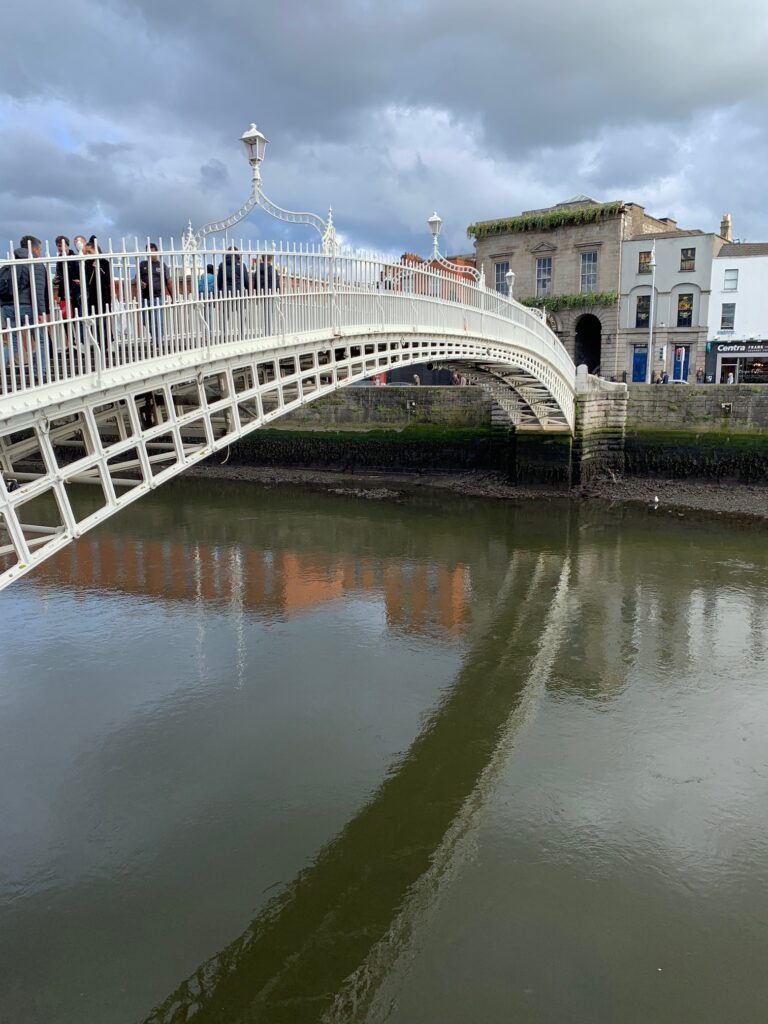
By most measures, the Liffey is small and skinny— running fast in some places but overall, it’s mostly slow and is just another easily navigated attribute of a capital city. A coastal one in this case.
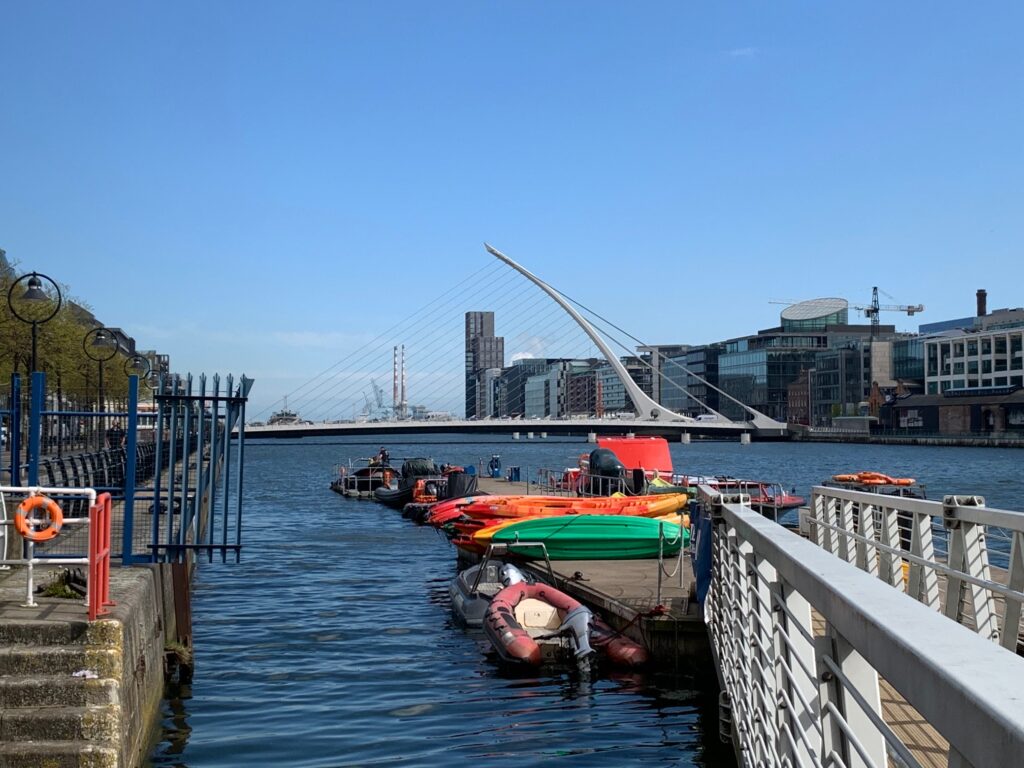
If you’re on the right approach for landing, and the weather permits, out over Dublin Bay you can trace just how the river empties. This is thanks to the barricade of buildings that are punctuated by the Poolbeg Stacks sitting well beyond the city limits. Almost. The Stacks are of course easiest to spot regardless of whether you are on land looking east or aloft and gazing down and out at a 1000 angle. If you’re airborne though, you have the chance to look a bit more closely. The river can actually be traced a bit further out: along a quay wall even skinnier than an lár Liffey that is definitively punctuated by a small yet robust peg. The Poolbeg Lighthouses.
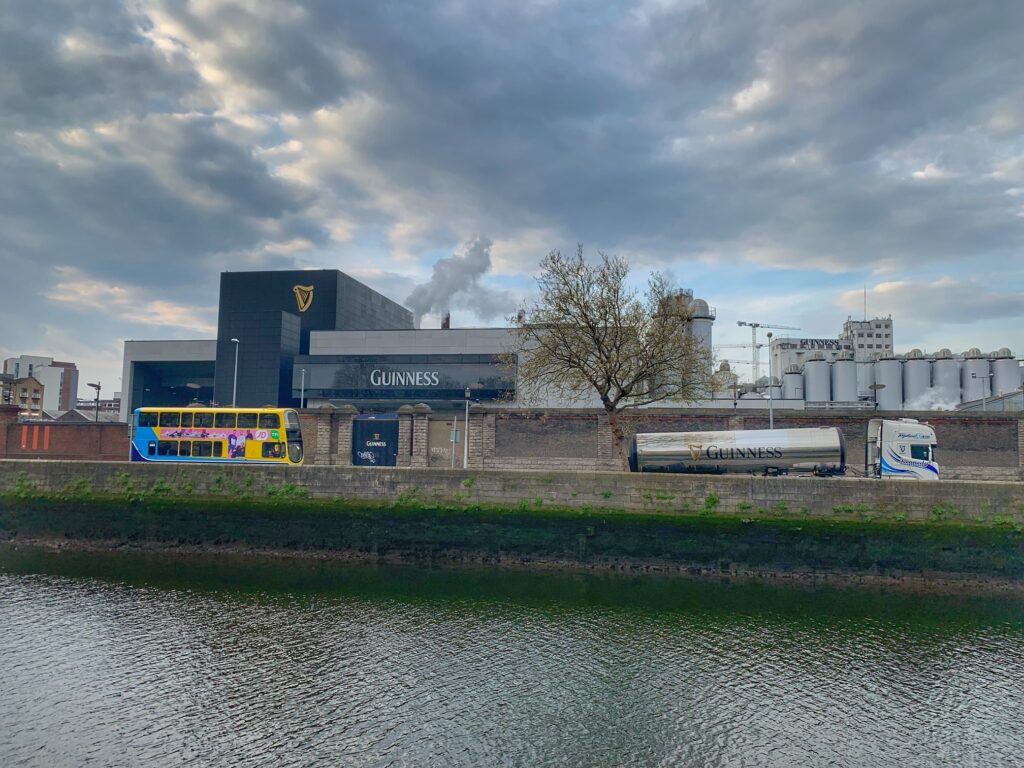
It’s been there long before I ever popped up in Dublin. An 18-year-old deposited on the North Side quay just before O’Connell Bridge, jumping out of the cab of a lorry along with two friends and my 12 year old brother. Blink blink. This is Dublin in its gristly grey.
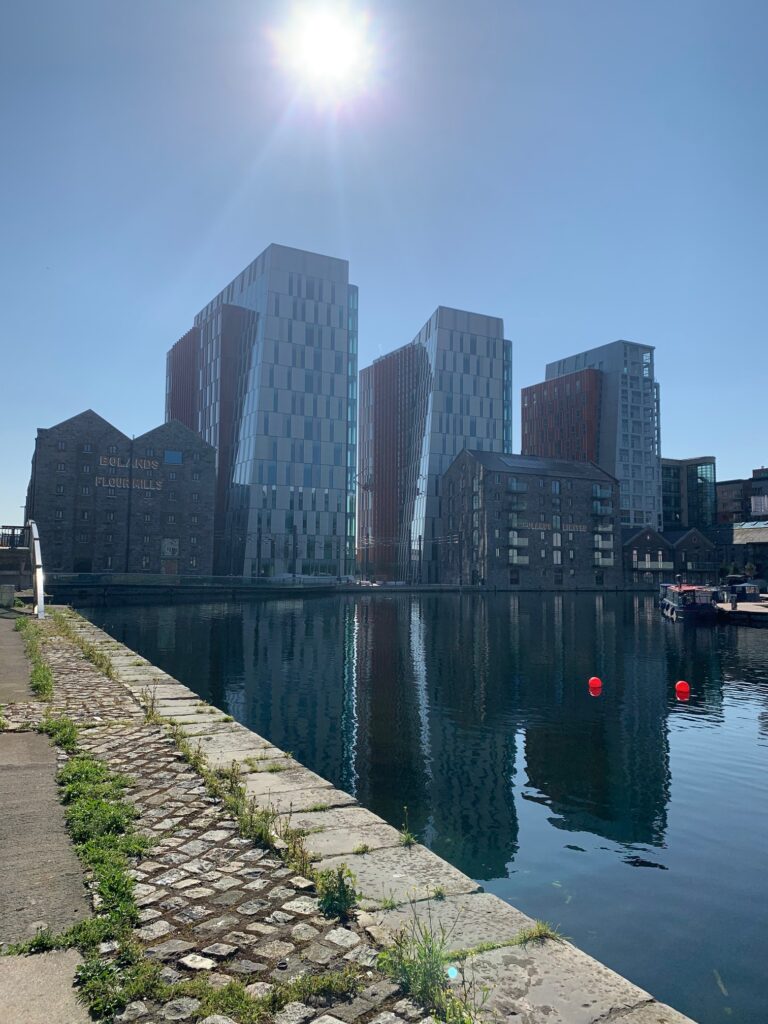
I learned a lot about Dublin’s environs over the years, but at the same time I feel as though I have learned almost nothing at all. Furthermore, everything has changed so much since the first Celtic Tiger. But the Poolbeg Lighthouse, it was something that I always vaguely knew existed. It just wasn’t a place that was easily accessible by DART or bus (the Luas didn’t exist back then). With taking taxis viewed as a luxury, it was always something that seemed outside my reach in terms of accessibility as a college kid.

I’ve come to believe that most of life is simply gaining the ability to look at various objects, people and places from various angles. Some are harder to achieve than others. But if you can get to a point where it seems like you can spin something in your hand, that sense of immersion and understanding does something good for the spirit. It helps to somehow assist in navigating the nuances of life, and fosters appreciation for differences and empathy. Even when we’re talking about navigation aids.
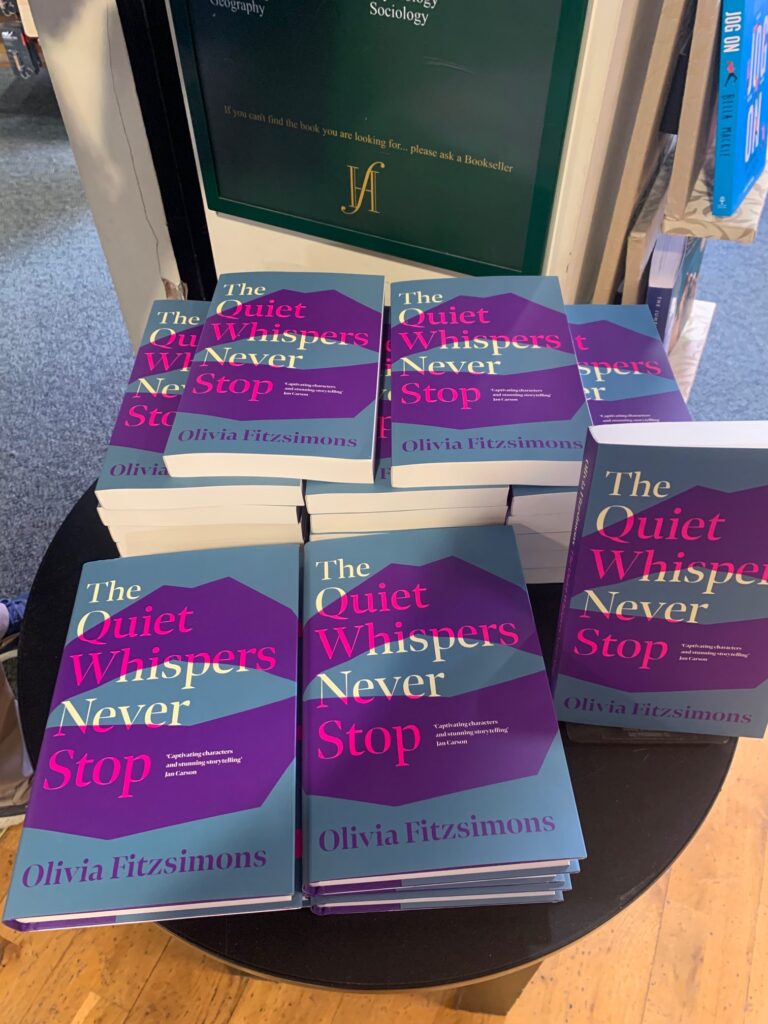
So when the pandemic eased along with motivation well worthy to get me back to Dublin, I was fortunate that my aircraft approached Ireland from the east. I had the ability to gaze south out the window and spy the Poolbeg Stacks. They mark Dublin like a branding tool that was pressed down and simply never picked up again. And while I couldn’t see it from where I sat, this also meant that a channel marking lighthouse was not far away. After decades, I wanted to see everything up close.
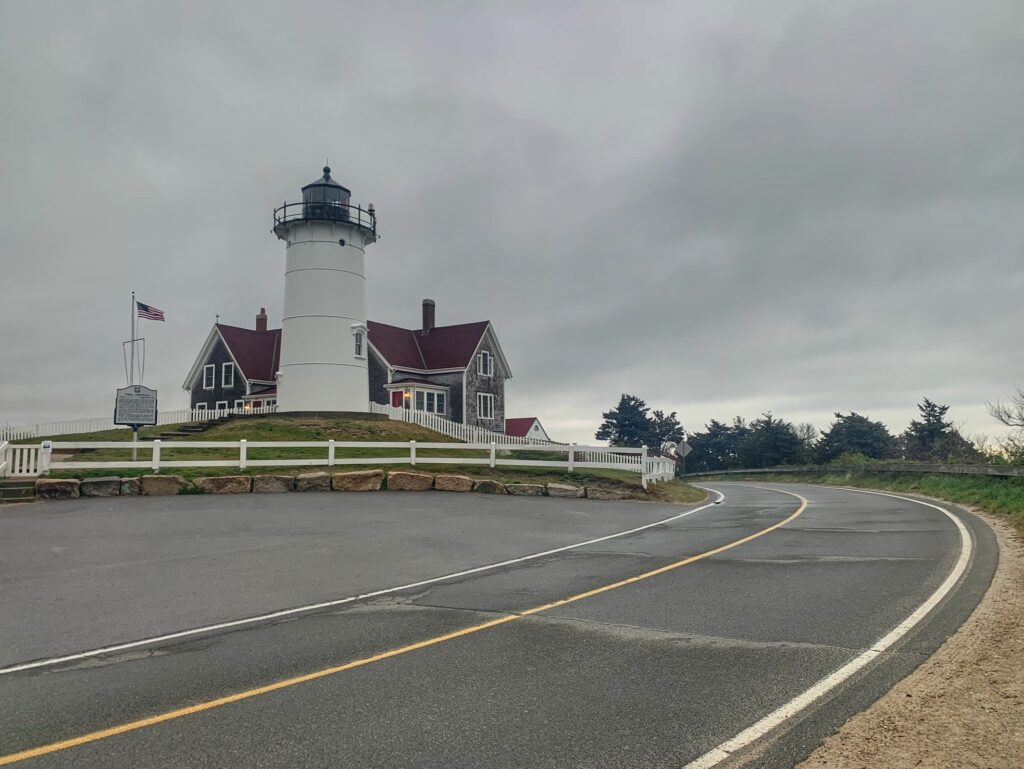
Maybe it’s because my father sowed this interest in lighthouses when he decided to build a full-size one himself, brick by brick. A replica that is slightly taller than our town’s lighthouse. For sure I think it’s the reason why I found so much delight in exploring a long-abandoned lighthouse on the Cape Verdean isle of Santo Antão. And undoubtedly it’s the reason why we now have an old light element from Gay Head Lighthouse just sitting in the middle of our kitchen island. You plug it in and it still rotates. The individual lightbulbs coming into view add they spin from behind the lens. Getting a look up these close, we effectively become the moths who are enchanted by the proximity.
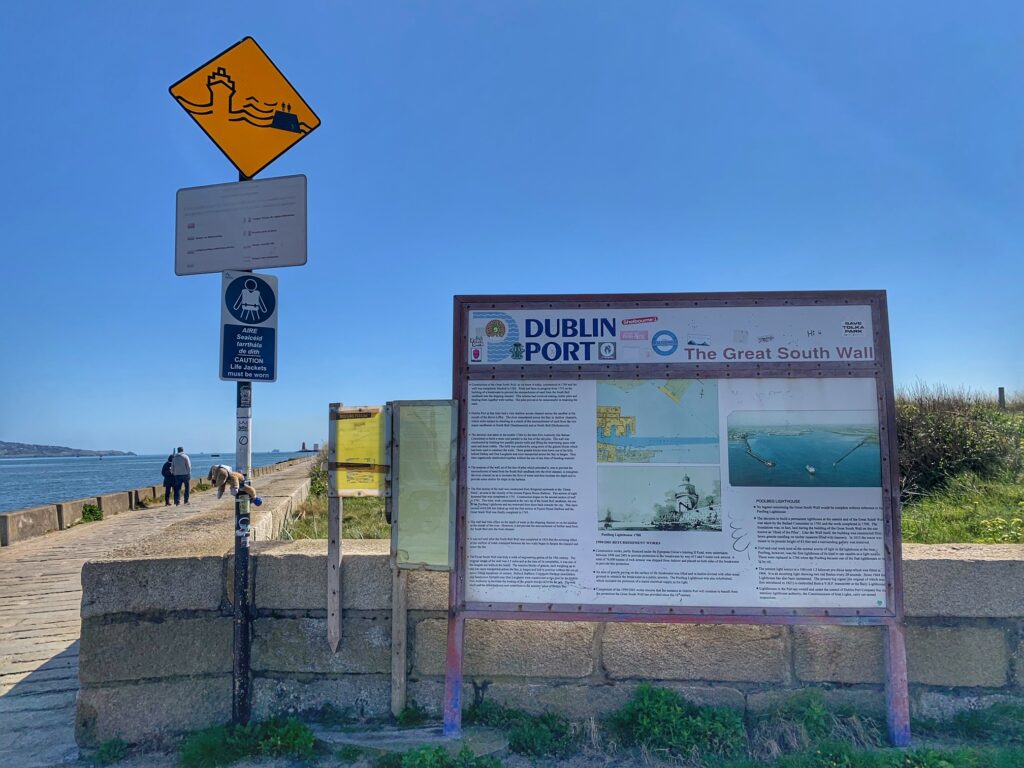
And so back in Dublin, we really had no idea how to get to the South Wall Quay. It’s not the most heavily trafficked area, and so we simply started walking until we reached Ringsend. Past the edge of where I once lived to neighborhoods that are more than mid-step in transformation from what Dublin used to be. If we walked long enough, we were sure to flag a taxi that could get us close to the sea.
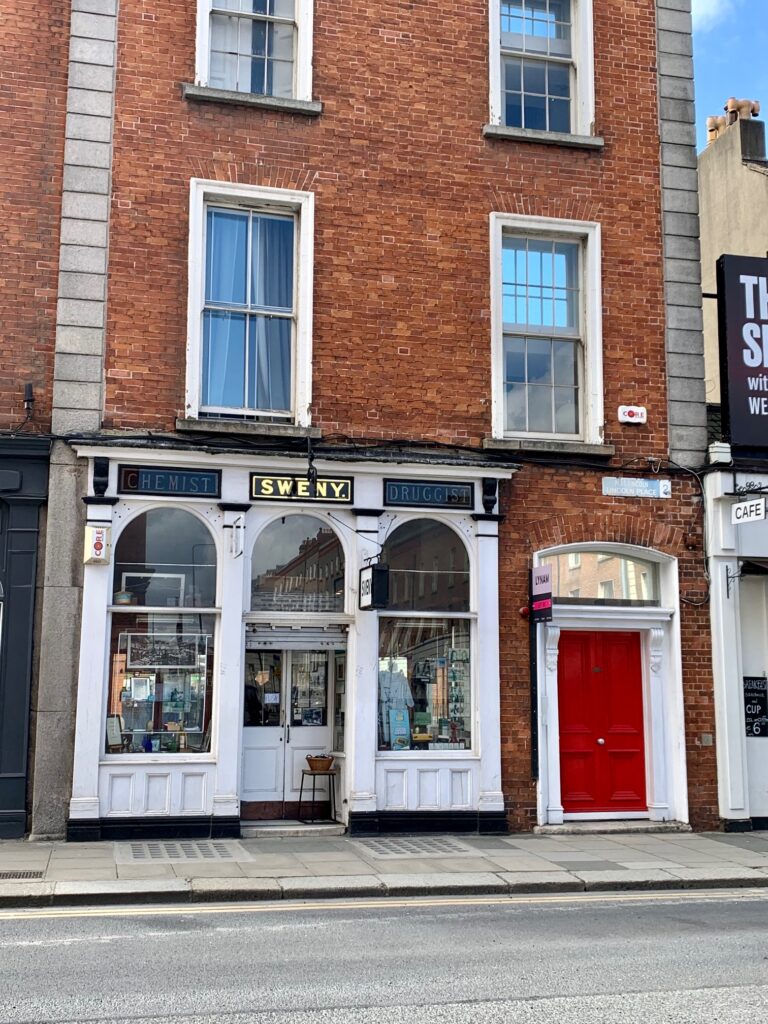
We departed Townsend Street and walked until we thought we might find a taxi stand. After about a half our of walking under an April sky that was 100% blue sunshine, we came up empty and ultimately flagged a taxi that made an illegal U-Turn after scooping my brother and I up. I forgot to mention that my brother was back with me. He’s tossed 28 more years on top of those 12-year-old looks, but like me he is still up for getting a better look at things. And the taxi driver, an older Dubliner named Noel, he plumbed his brain to remember the exact way out towards Poolbeg Lighthouse.
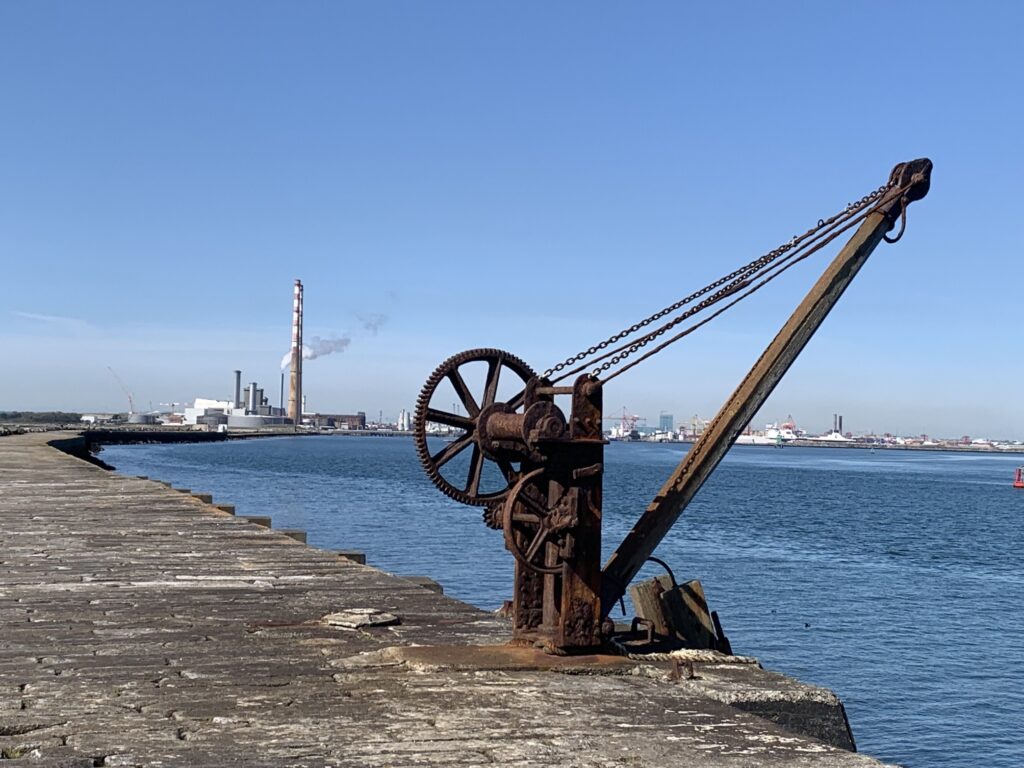
“I used to work out there, many years ago,” he told us as we weaved to roads that were little more than industrial and tall grass. “We used to handle lines for the big ships coming into Dublin. There were many nights at 2am we would walk up the South Quay Wall, bored while waiting to tend a ship.” It seems as though we ourselves were giving our man a reunion with a place he hadn’t visited in years.
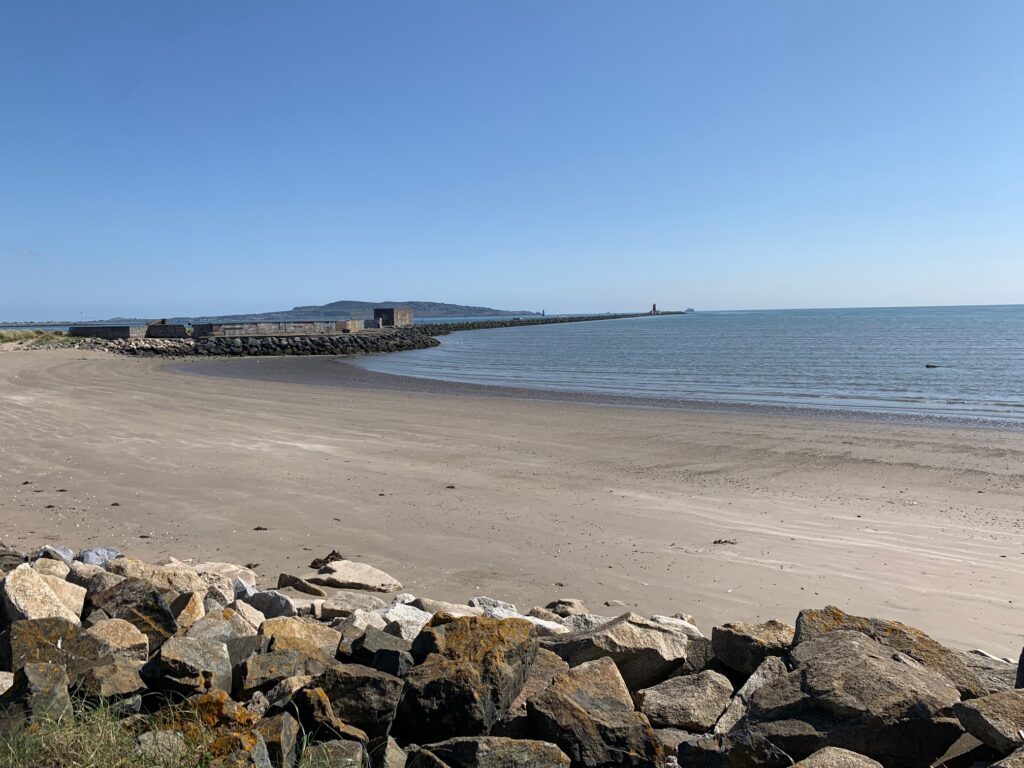
The area itself out by the Poolbeg Generating Station is not exactly inviting. Nothing about it screams, “Walk this road” for touristy, fresh-air seekers like us. It was for this reason I then understood why I’d heard that most folks reach the lighthouse after an odyssey of a walk from Sandymount.
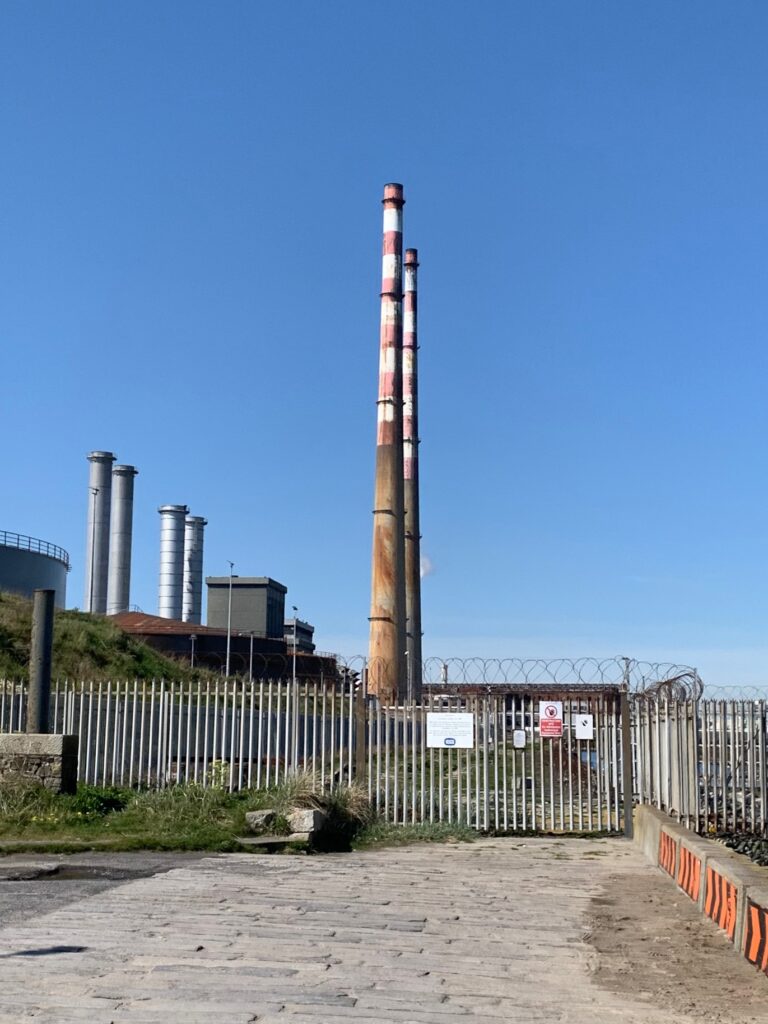
The driver eventually regained his bearings after only one errant turn, and he deposited us just beyond the rusting and defunct Stacks sometimes called the Pigeon Towers: one of Dublin’s greatest symbols that helped give the city the nickname, “The Big Smoke” …. although I’ve never heard anyone actually call it that.
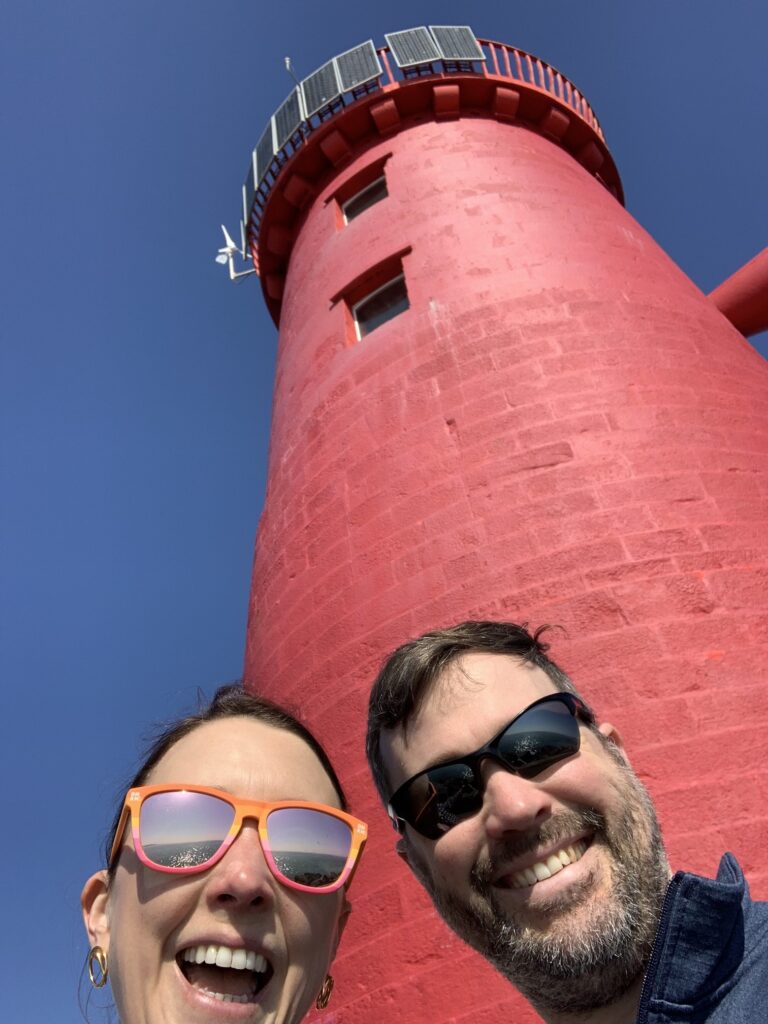
It took more than a half hour to walk the length of the wall. Great fortune for us was that it was a windless journey with continued cloud-free sun that painted us and everything within sight. Even as we continued to negotiate the rough stonework, slowly growing closer to the end, the little red lighthouse didn’t appear to grow from its dwarf-like appearance. It was in fact 8 meters higher than Nobska Light, and it never seemed to grow any taller until we were standing right under it. Small…Far Away.
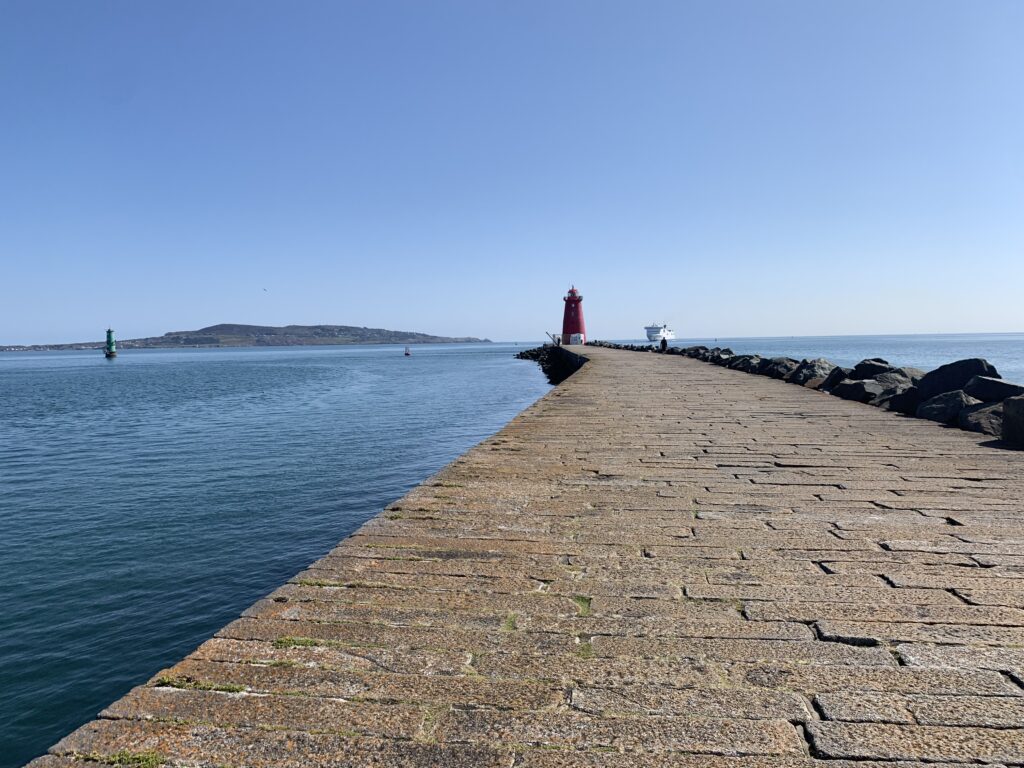
With the opportunity to gaze out over Dublin Bay for over an hour, we got to see an Irish Ferries carrier start fairly miniature on the horizon and grow to full size once it reached the fully-formed lighthouse. From there it was a quick pass down into what becomes the Liffey until it reached its berth on the North Side.
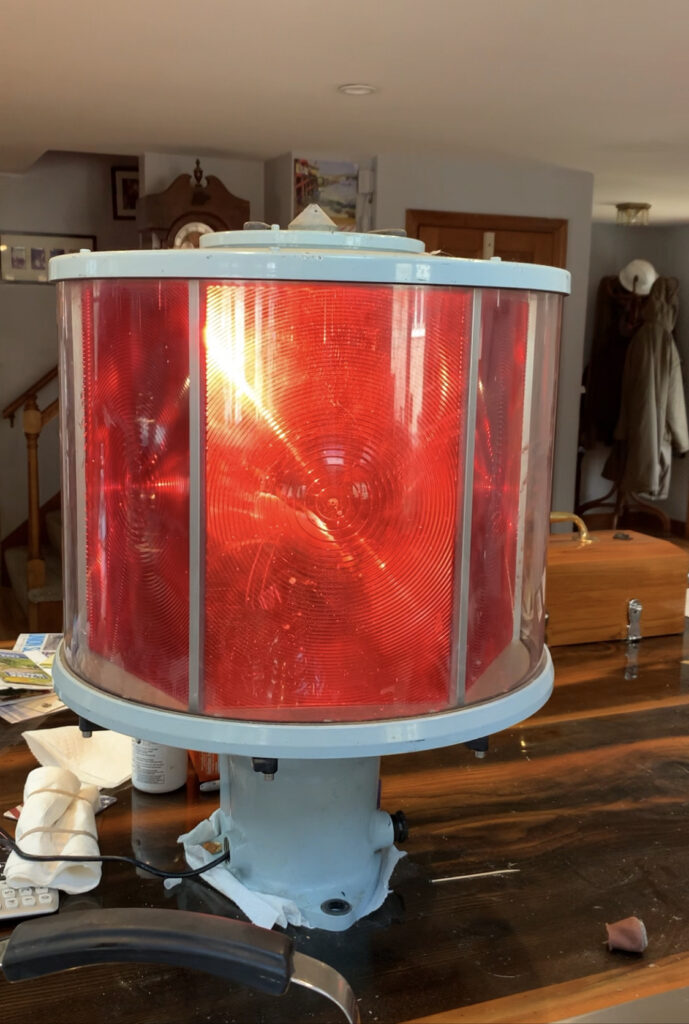
One week later while unexpectedly home on Cape Cod, I would reflect on the fact that Poolbeg Lighthouse was a candy apple red color- the same hue as an old Fresnel Lens from Gay Head Lighthouse on Martha’s Vineyard. I know this because it now sits atop our kitchen table. Of course all of this observation means nothing, but for me I smiled at the ability to string Dublin to home in such an up close and personal way.
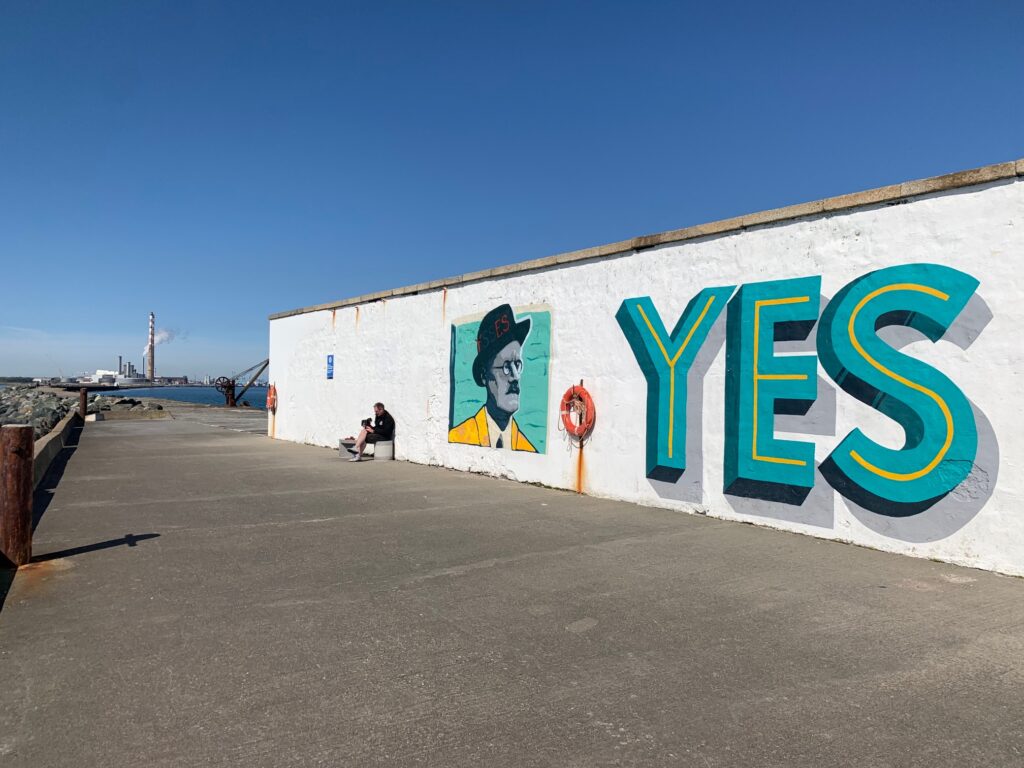
The short barrier wall connected to Poolbeg Light bears a cartoon rendering of James Joyce along with a word from the famous Molly Bloom monologue: Yes. Ulysses of course is a tome about a journey across Dublin in one single day. And it is only this year that I have sought to read this book. As I find myself picking through the city details of each chapter, I find satisfaction and some identity in each scene described. It’s of course not the same– but just like our morning walk to the lighthouse—both experiences feel special. Special like how I feel every time I return to the Liffey, and any other place where I get the chance to take at least one more look.